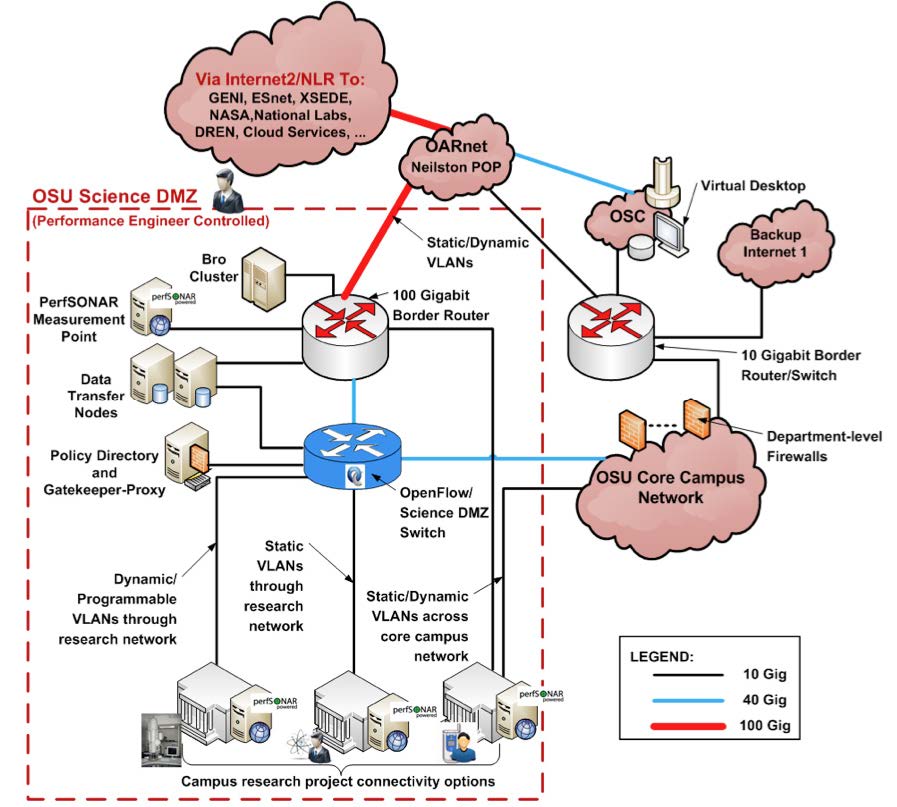A logical network diagram of the Science DMZ network that will help scientists collaborate over the Internet with minimal interference from security measures.
Since its inception, the Internet has sped the pace of scientific discovery, but the necessary firewalls that protect institutions from malicious online activity often hinder data sharing among research partners.
To help solve this problem, a research team from The Ohio State University, the University of Missouri and the Ohio Technology Consortium are working to create a safe and resilient network architecture dubbed the “Science DMZ” – a play on the term “demilitarized zone.” In this case, instead of being a neutral area between warring nations, the DMZ will be a sub-network on the Internet where institutions normally protected by firewalls will be able to freely and safely share information with each other.
“We, as researchers, need the Internet to effectively collaborate with colleagues around the world, but using it poses a challenge,” said Caroline Whitacre, Ph.D., vice president for research at Ohio State and principal investigator of the project. “Researchers haven’t been able to widely adopt networking advances, mainly due to limitations in the traditional cyberinfrastructure equipment, policies and engineering practices that are already in place on university campuses for our protection.”
For example, the Internet2 consortium provides a high-speed connection between campuses across the country, but it can’t quickly pass information through a university’s local firewalls. At this point, dataflow slows, and a bottleneck forms. With a million-dollar federal grant, the researchers will create an experimental research network – a prototype for scientific collaborations around the world to follow. Ultimately, the researchers aim to identify the software, hardware, methods and protocols that will allow scientists to securely move data past local firewalls. The project will provide the flexibility required by researchers, such as HPC users at the Ohio Supercomputer Center, while keeping the infrastructure integrity necessary for the safe, smooth functioning of campus networks.
“The research team also will allow for 100 Gigabit-per-second connectivity into the project, to leverage the soon-to-be-lit 100 Gbps statewide network being deployed by the Ohio Academic Resources Network (OARnet),” said Prasad Calyam, Ph.D., research director for networking and virtualization for OH-TECH’s Research and Innovation Center and a co-PI on the project. This is in addition to integrating relevant advanced networking technologies, such as communications protocols, measurement tools and transport services.
“We hope that reducing or removing the bottlenecks will encourage much more research and more collaboration across regional, national and international networks,” Whitacre said.
--
Project lead: Caroline Whitacre, The Ohio State University
Research title: CC-NIE Integration: Innovations to transition a campus core
cyberinfrastructure to serve diverse and emerging researcher needs
Funding source: National Science Foundation
Web site: http://bit.ly/OSC-RR-Whitacre
